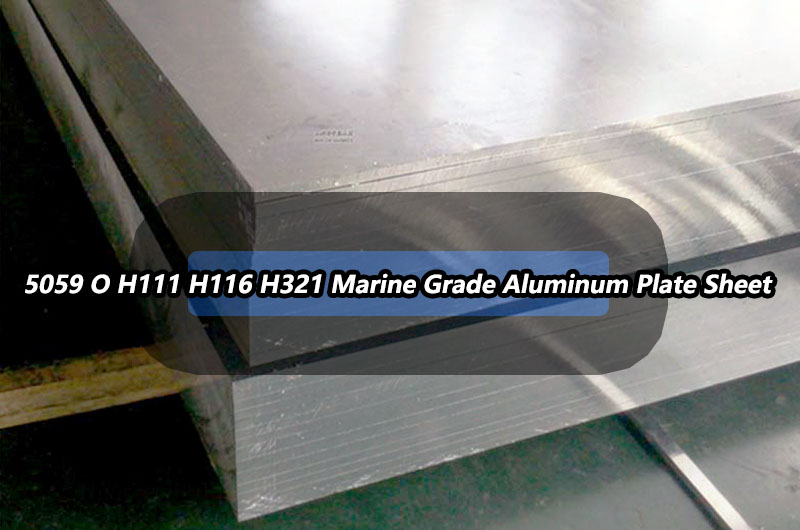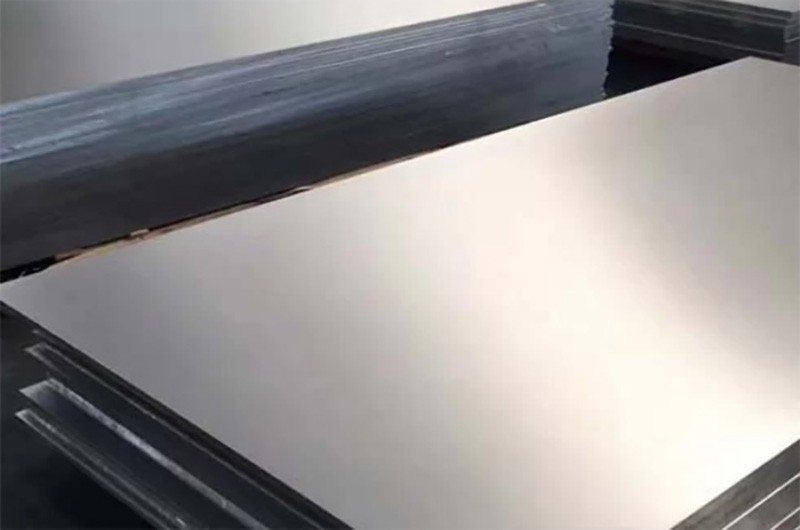- Armor Plate Why choose aluminum plate?
- 5059 Aluminum Armor Plate Material Specifications and Properties
- 5059 Aluminium armor plate specifications
- 5059 Armor Aluminum Plate applicable fields
- 5059 Armor Aluminum Plate manufacturing process
5059 aluminum alloy armor plate is a key material used in the manufacture of defense equipment such as military vehicles, aircraft and ships. 5059 Armor Aluminum Plate has a relatively low density and high strength, making it an ideal lightweight protective material.

Armor Plate Why choose aluminum plate?
1. Armor aluminum plate has low density and good mechanical properties
The density of aluminum is 1/3 that of steel. Under the same surface density of aluminum alloy and armor steel, the thickness is 3 times that of steel, and its bending stiffness is 9 times that of armor steel. Therefore, the use of aluminum alloy can significantly improve the stiffness of the structure.
For every 1 kg the armored vehicle loses, the power equipment required to carry it can be reduced by 0.6 kg, which in turn reduces the vehicle's overall combat weight.
The use of aluminum alloys on armored vehicles can cause a "chain-like" mass reduction effect. Without reducing the anti-elastic properties, the use of aluminum alloy armor materials can reduce the mass by 6% to 20%, and some can even reach 50%.
2. Armored aluminum plates have good protective performance and high mobility
Armor materials must have comprehensive properties of resistance to penetration and fragmentation, so armor materials are required to have both high strength and high toughness. During the firing test, the areal density of armored aluminum alloy at most angles of incidence was lower than that of armored steel, and its protection coefficient was higher than that of armored steel in terms of resistance to large projectiles and high rates of fire, especially to shell fragments.
3. Good processing and craftsmanship, suitable for mass production
The unit price of aluminum alloy is higher than that of ordinary armor steel, but when aluminum alloy is used to manufacture military vehicles, the mass of aluminum alloy required is less than that of steel, which reduces the price difference between the two.
Aluminum alloy armor has greater bending stiffness, which can eliminate the need for reinforcing ribs and reduce the manufacturing cost of armored vehicles. At the same time, extruded, forged and cast aluminum alloy parts can also be used for welding, which not only reduces mass, but also greatly reduces processing costs.
In addition, the processing and welding speed of aluminum alloy exceeds that of armor steel, which can reduce production expenses and costs. Reducing the number of structural parts of armored vehicles can save equipment and power, save energy consumption, and bring economic benefits.
5059 aluminum alloy armor plates are known for their excellent strength, lightweight and corrosion resistance, making them ideal for protecting critical equipment and personnel.

5059 Aluminum Armor Plate Material Specifications and Properties
5059 Aluminum Alloy: This aluminum alloy is a high-strength, corrosion-resistant alloy with excellent mechanical properties.
H131, H136, H116, H321 states: Different heat treatment states give aluminum alloys different properties, including strength, corrosion resistance and processability.
1. High strength and lightweight
Tensile Strength: 5059 aluminum alloy exhibits excellent tensile strength in different states, making it an ideal choice for manufacturing armor plates.
Lightweight design: Compared with traditional armor materials, aluminum alloy has a lower density, which contributes to lightweight design and improves overall performance.
2. Anti-corrosion performance
Seawater corrosion resistance: 5059 aluminum alloy exhibits excellent seawater corrosion resistance, making it widely used in naval vessels and marine environments.
Oxidation resistance: Good anti-oxidation properties ensure that the material's stability can be maintained for a long time in harsh environments.
3. Processability
5059 aluminum alloy is easy to process into various shapes and therefore can be customized according to design needs.
4. Impact resistance
5059 Armor Aluminum Plate provides excellent impact resistance, helping to absorb and disperse the impact from explosions, munitions or other external threats.
5. Thermal performance
Aluminum alloys may have some stability to temperature changes, which is critical for military equipment used in different climate conditions.
5059 Aluminium armor plate specifications
| Aluminum alloy | 5059 |
|---|---|
| Temper | H131 H136 H116 H321 |
| Production standards | MIL-DTL-46027, ASTM B209, EN 485-2, SAE AMS4027 |
| Thickness (mm) | 0.250 to 3.000 inch |
| Width (mm) | ≤100inch |
| Length (mm) | ≤236inch |
The above specifications are for reference, special specifications can be customized.
5059 Armor Aluminum Plate applicable fields
- Military applications: 5059 H131 H136 H116 H321 aluminum alloy armor plates are widely used in military equipment such as army combat vehicles, warships and aircraft to provide effective protection.
- Aerospace: In the aerospace sector, this armor plate is used to manufacture structural components of aircraft and missiles to ensure safety during high-speed flights.
- Shipbuilding industry: In shipbuilding, this aluminum alloy armor plate is used to improve the elasticity of the hull, while reducing the weight of the ship and improving fuel efficiency.
5059 Armor Aluminum Plate manufacturing process
- Heat treatment process: Different heat treatment states affect the crystal structure and properties of aluminum alloys. The performance of the armor plate can be controlled through appropriate heat treatment processes.
- Forming and processing technology: 5059 aluminum alloy armor plates can be adapted to various complex shapes and needs through a variety of forming and processing technologies, such as milling, stamping and welding.
5059 H131 H136 H116 H321 aluminum alloy armor plate is widely used in many fields due to its excellent strength, lightweight and corrosion resistance. Its unique material properties make it an indispensable part of modern high-tech applications, providing reliable protection and support for a variety of critical application areas.

